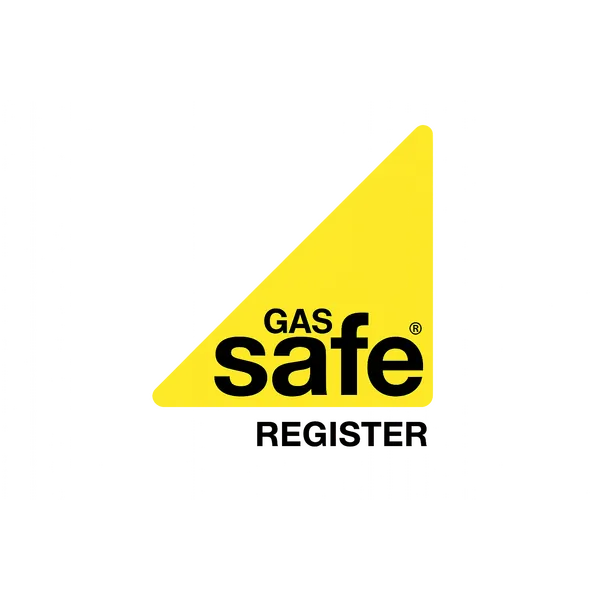Green Hydrogen's Industrial Breakthrough: Sweden's Stegra Plant and the Dawn of Zero-Emission Steel
In the frozen landscape of northern Sweden, a revolutionary industrial plant is taking shape that could fundamentally change how we think about heavy industry and carbon emissions. Stegra, a Swedish startup, has raised nearly $7 billion to build what will be the world's first industrial-scale green hydrogen steel plant, set to begin production in 2026. This isn't just another renewable energy project—it's the beginning of a new era in industrial manufacturing.
The Steel Industry's Carbon Problem
Steel production is one of the most carbon-intensive industrial processes on Earth. The industry is responsible for approximately 8% of global CO2 emissions, producing nearly 2.6 billion tons of carbon dioxide annually. Traditional steelmaking relies on coking coal to reduce iron ore in blast furnaces, a process that has remained largely unchanged for over a century.
The massive carbon footprint of traditional steel production methods
The numbers are staggering:
- 1.9 tons of CO2 are produced for every ton of steel
- 70% of steel production still relies on coal-based blast furnaces
- 2.6 billion tons of CO2 are emitted annually by the steel industry
- Growing demand for steel, particularly in developing economies, threatens to increase emissions further
For decades, the industry has struggled to find viable alternatives to this carbon-intensive process. Various approaches have been attempted, from carbon capture and storage to electric arc furnaces, but none have offered the scalability and economic viability needed to transform the industry fundamentally.
Enter Green Hydrogen: The Game-Changing Solution
Green hydrogen—produced by splitting water using renewable electricity—represents the most promising pathway to decarbonizing steel production. Unlike traditional hydrogen produced from natural gas, green hydrogen generates zero direct emissions during production and use.
Here's how the revolutionary process works:
The Stegra Process
- Renewable Energy Generation: The Stegra plant will use a mix of wind and hydropower to generate clean electricity
- Water Electrolysis: Clean electricity splits water (H2O) into hydrogen (H2) and oxygen (O2)
- Direct Reduction: Green hydrogen reacts with iron ore at high temperatures, producing metallic iron and water vapor instead of CO2
- Steel Production: The resulting iron is processed into steel using electric arc furnaces
The chemical reaction is elegantly simple:
Fe2O3 + 3H2 → 2Fe + 3H2O
Instead of producing carbon dioxide, this process generates only water vapor as a byproduct.
The Stegra Plant: A $7 Billion Bet on the Future
Located in Boden, northern Sweden, the Stegra facility (formerly H2 Green Steel) represents the largest private investment in green hydrogen technology to date. The plant's specifications are impressive:
The revolutionary Stegra plant layout and technical specifications
Technical Specifications
- Annual Steel Production: 4.5 million metric tons
- Green Hydrogen Production: 800,000 tons annually
- Electricity Consumption: 8-10 TWh per year (equivalent to a small country)
- CO2 Emissions: Near zero during operation
- Employment: 2,500 direct jobs, 10,000 indirect jobs
The Swedish Advantage
Sweden provides ideal conditions for green hydrogen steel production:
- Abundant Renewable Energy: Hydropower provides 45% of Sweden's electricity, with wind contributing another 17%
- Stable Energy Grid: Sweden's electrical grid is among the most stable and renewable in the world
- Mining Heritage: The region has a long history of iron ore mining and metallurgy
- Government Support: Strong policy backing for industrial decarbonization initiatives
Beyond Steel: The Broader Green Hydrogen Revolution
While the Stegra plant captures headlines, it's part of a much broader transformation across heavy industry. Green hydrogen demand is projected to skyrocket across multiple sectors:
Projected Green Hydrogen Demand by 2030
- Industrial processes: 63.22 million tons
- Transportation: 8.55 million tons
- Power generation: 18.50 million tons
- Ammonia production: 18.11 million tons
- Synthetic fuels: 7.28 million tons
Industrial Applications Beyond Steel
Cement Production: Green hydrogen can replace fossil fuels in cement kilns, potentially reducing emissions by 30-40% in this carbon-intensive industry.
Chemical Manufacturing: Hydrogen serves as a feedstock for ammonia, methanol, and other chemicals, offering a pathway to green chemistry.
Aluminum Smelting: While not directly replacing carbon anodes, green hydrogen can power the electricity needed for aluminum production.
Glass Manufacturing: High-temperature glass production can use hydrogen burners instead of natural gas, reducing emissions significantly.
The Economics of Green Hydrogen Steel
The economic case for green hydrogen steel is rapidly improving. Several factors are driving this transformation:
Cost Reductions
- Electrolyzer costs have fallen by 40% since 2020
- Renewable electricity prices continue to decline globally
- Carbon pricing makes traditional steel production more expensive
- Scale effects from large projects like Stegra drive down unit costs
Market Dynamics
The steel industry is experiencing unprecedented demand for low-carbon products:
- Automotive manufacturers are requiring green steel for electric vehicles
- Construction companies are seeking low-carbon building materials
- Consumer brands are implementing carbon-neutral supply chain requirements
- Government procurement policies increasingly favor low-carbon products
Premium Pricing
Early green steel commands a premium of 15-30% over traditional steel, but this gap is expected to narrow as:
- Production scales up
- Carbon pricing increases
- Consumer demand grows
- Technology improves
Technology Breakthroughs Driving Progress
Several technological advances are making green hydrogen steel production more viable:
Advanced electrolysis technologies enabling green hydrogen steel production
Advanced Electrolysis
Solid Oxide Electrolyzers (SOE): Operating at high temperatures (700-800°C), these systems achieve 95% efficiency and can utilize waste heat from steel production.
Proton Exchange Membrane (PEM) Electrolyzers: Offering rapid response times, these systems can handle the variable output from renewable energy sources.
Process Innovations
E-TAC Technology: Developed by Israeli researchers, this electrochemical and thermally activated chemical process can produce hydrogen at lower costs than traditional electrolysis.
Integrated Systems: New plant designs integrate renewable energy generation, hydrogen production, and steel manufacturing in optimized configurations.
Global Competition and Market Dynamics
The Stegra plant is not operating in isolation. A global race is underway to develop green hydrogen steel production:
Major Projects Worldwide
Europe:
- ArcelorMittal: Developing hydrogen-based steel production in Hamburg, Germany
- Tata Steel: Converting Netherlands operations to hydrogen by 2030
- SSAB: Partnering with LKAB and Vattenfall on the HYBRIT project
Asia:
- POSCO: South Korea's largest steelmaker investing $40 billion in hydrogen steel
- Baowu Steel: China's largest steel producer piloting hydrogen reduction technology
- JFE Steel: Japan developing hydrogen-based steelmaking processes
North America:
- Nucor: Exploring hydrogen applications in electric arc furnaces
- Cleveland-Cliffs: Investigating hydrogen for direct reduction processes
Supply Chain Implications
The shift to green hydrogen steel will reshape global supply chains:
- Proximity to renewable energy becomes more important than proximity to coal
- Hydrogen transportation infrastructure development accelerates
- Steel recycling gains importance as a low-carbon feedstock
- International trade patterns shift toward regions with abundant renewable energy
Environmental Impact and Sustainability
The environmental benefits of green hydrogen steel extend beyond carbon emissions:
Emission Reductions
- 95% reduction in CO2 emissions compared to blast furnace steel
- Elimination of particulate matter and sulfur compounds
- Reduced water consumption through recycling and optimization
- Minimal waste streams compared to traditional coking processes
Circular Economy Benefits
- Hydrogen co-products can be used in other industrial processes
- Oxygen byproducts from electrolysis have commercial applications
- Waste heat recovery improves overall energy efficiency
- Steel recycling becomes more economically attractive
Challenges and Obstacles
Despite the promising outlook, several challenges remain:
Technical Challenges
Hydrogen Storage: Storing large quantities of hydrogen safely and cost-effectively remains complex.
Process Scaling: Moving from pilot projects to full industrial scale presents engineering challenges.
Quality Control: Ensuring consistent steel quality using hydrogen-based processes requires continued development.
Economic Barriers
High Capital Costs: Initial investment requirements are 20-30% higher than traditional steel plants.
Energy Intensity: Green hydrogen steel requires 2-3 times more electricity than conventional processes.
Supply Chain Development: Supporting infrastructure for hydrogen transport and storage needs expansion.
Regulatory and Policy Issues
Carbon Pricing: Adequate carbon pricing is essential to make green steel competitive.
Standards Development: New standards for green steel certification and trading are needed.
International Coordination: Global coordination is required to prevent carbon leakage and ensure fair competition.
The Road Ahead: 2025 and Beyond
As the Stegra plant approaches its 2026 launch, the green hydrogen steel industry is poised for rapid expansion:
Short-term Outlook (2025-2030)
- 10-15 commercial-scale plants expected to begin operation globally
- 5-10% market share for green steel in premium segments
- $100-200 billion in announced investments across the industry
- Technology cost reductions of 30-40% through scale and innovation
Medium-term Projections (2030-2040)
- 25-30% market share for hydrogen-based steel production
- Grid-scale renewable energy dedicated to industrial hydrogen production
- International hydrogen trade becoming economically viable
- Carbon neutrality achieved by leading steel producers
Long-term Vision (2040-2050)
- Dominant market position for green steel in developed markets
- Technology export opportunities for early adopters
- Integrated industrial clusters built around hydrogen production
- Complete transformation of the global steel industry
Investment Opportunities and Market Dynamics
The green hydrogen steel revolution is creating new investment opportunities across the value chain:
Direct Investment Areas
- Electrolyzer manufacturers scaling production capacity
- Renewable energy developers building dedicated industrial projects
- Steel producers upgrading facilities for hydrogen processes
- Hydrogen infrastructure companies developing storage and transport solutions
Supporting Industries
- Engineering companies designing green steel plants
- Equipment manufacturers producing specialized machinery
- Software developers creating process optimization systems
- Financial services developing green financing instruments
Conclusion: A New Chapter in Industrial History
The Stegra plant represents more than just a technological breakthrough—it's a symbol of industrial transformation. By proving that heavy industry can operate without massive carbon emissions, projects like this are reshaping our understanding of what's possible in the fight against climate change.
The implications extend far beyond the steel industry. If hydrogen can decarbonize steel production, it can transform cement, chemicals, aluminum, and countless other industrial processes. We're witnessing the birth of a new industrial revolution, one powered by clean hydrogen and renewable energy.
The $7 billion investment in Stegra is not just about building a steel plant—it's about building the future. As this facility begins production in 2026, it will serve as a beacon for industrial decarbonization worldwide, proving that the transition to clean industry is not just possible but profitable.
The green hydrogen revolution is here, and it's starting with steel. From the frozen landscape of northern Sweden, a new chapter in industrial history is being written—one that promises cleaner air, stable jobs, and a sustainable future for heavy industry. The question is no longer whether green hydrogen will transform industrial production, but how quickly the rest of the world will follow Sweden's pioneering example.
Ready to explore green hydrogen opportunities? Contact us to discover how green hydrogen solutions can transform your industrial operations today.















